You can't crunch numbers or easily sort columns of data inside a Google Docs document. Those tasks are better left to spreadsheets. But once you have your data organized and formatted in your spreadsheet, you can easily add it to your Google Doc.
Here, I'll show you how to import data from Google Sheets to Google Docs. Plus, learn how to update tables in Google Docs with just one click.
How to insert a Google Sheet into a Google Doc
When you only want to show high-level data—or you want to show data in something less intimidating than a spreadsheet filled to the brim with numbers and formulas—copying snippets of Sheets data to a Google Doc can be really useful. Here's how to do it.
Open the desired Google Sheet you want to pull data from and the Google Doc you want to copy the data into.
From your spreadsheet, highlight the data you want to copy, and select Edit > Copy (or use your keyboard shortcut).

Now in your Google Doc, click where you want to put your table, and then select Edit > Paste.
From the Paste table window that appears, select Link to spreadsheet, then click Paste.

The selected data from your spreadsheet will appear—with the original formatting still intact—in your doc.
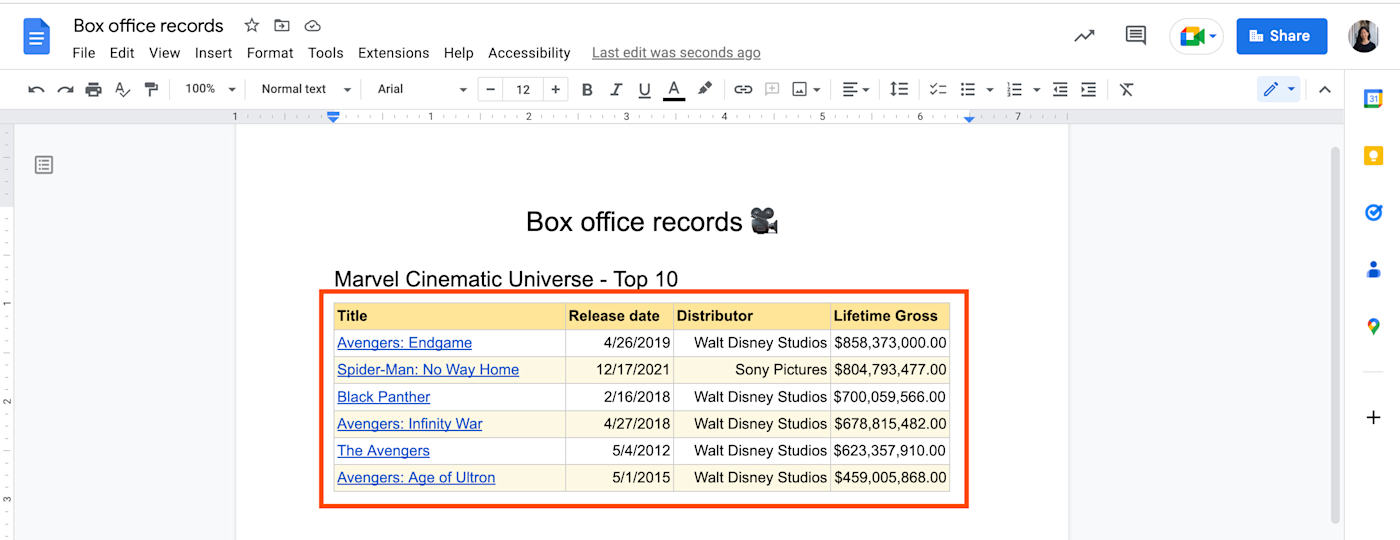
A couple of things to keep in mind:
If you select Paste unlinked, the table in Google Docs won't include a link to the original data source (the spreadsheet). That means any updates made to the original spreadsheet won't be reflected in the Google Doc.
Tables in Google Docs can only be linked to spreadsheets from Google Sheets in the same Google account. If the table is being linked to a spreadsheet from another account, you need to have Editor access to that spreadsheet.
If you haven't already tried syncing Google Sheets and Google Docs in this way, give it a go. At a minimum, you'll have a beautifully formatted table in your Google Doc. And I, for one, am always looking to make my Google Docs just a little bit prettier.
How to update your table in Google Docs
It would be time-consuming (and ripe for errors) if you had to manually update the table in your doc every time you updated your original data source. Fortunately, Google thought ahead on this one.
Before I get into how to update your table in Google Docs—with just one click—a quick note: when you originally copied data from your spreadsheet to your document, you effectively copied a specific cell range. In the original example, only data from cells A2:D7 were copied.
If you know you'll be adding more rows or columns of data to your Google Sheet, it's important to update the data range for your table in Google Docs.
Select any cell in the table. Click the link icon (🔗) that appears in the top-right corner above the table, and select Change range.
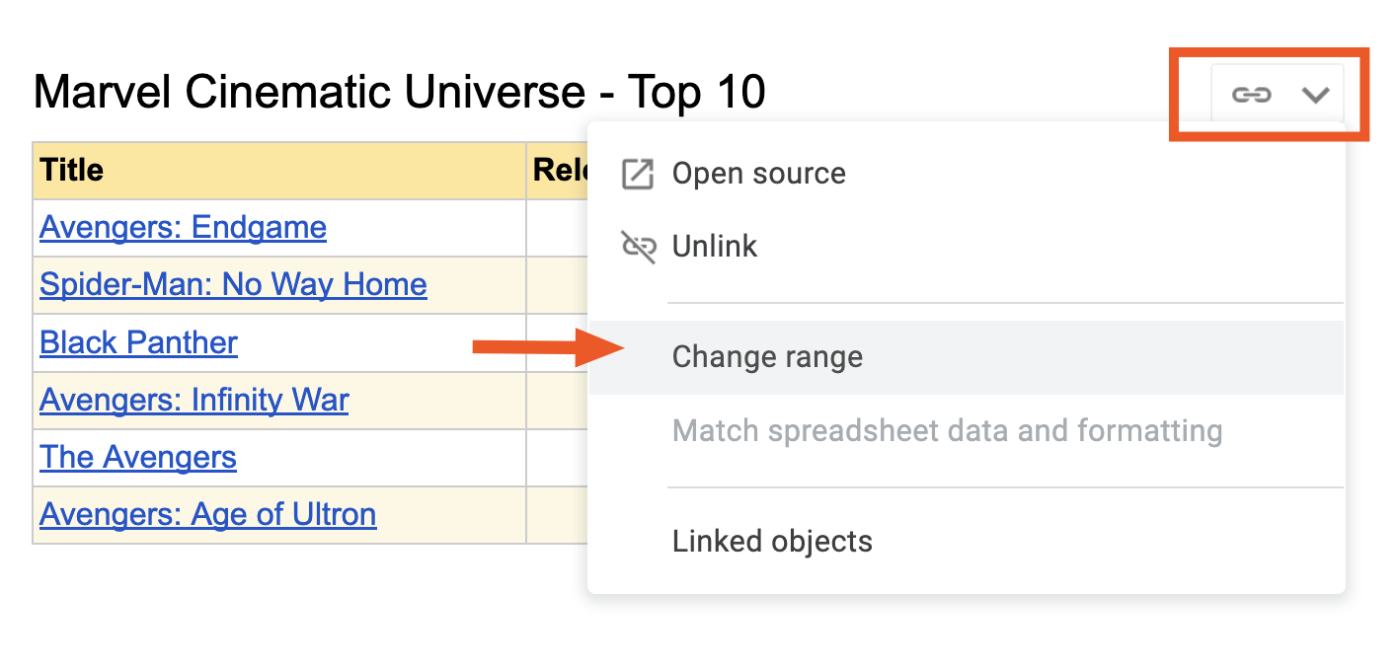
In the Linked cell range window that appears, update the range, and click OK. Empty rows will automatically appear in your table.
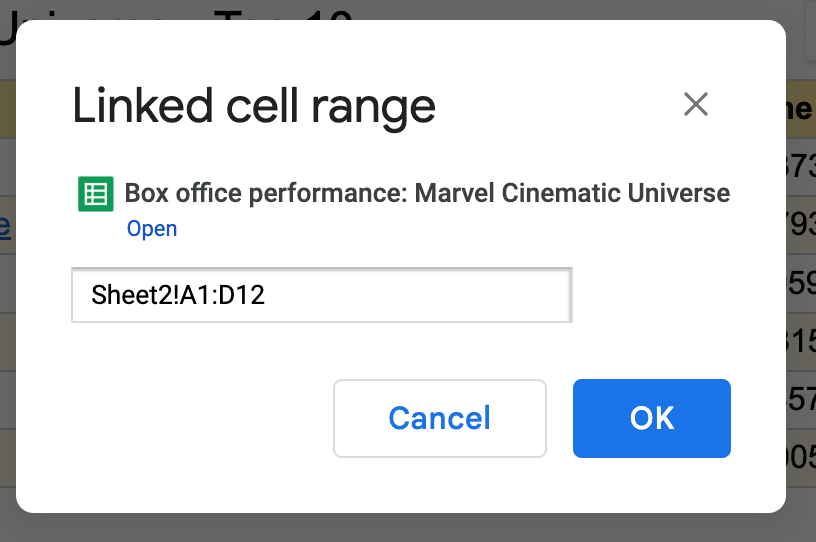
Note: If you're not sure about what data you might add down the road, I suggest giving yourself an additional 5-10 rows as a buffer. For example, if my original data range was A1:D7, I would update this to A1:D12. If you need to add additional columns, your table will get compressed, so keep this in mind when formatting your document.
Now back to actually updating your table in Google Docs.
For the purposes of this section, I've added more rows of box office data to my spreadsheet. Now I want to update the table in my Google Doc so it matches what I've recorded in Google Sheets.
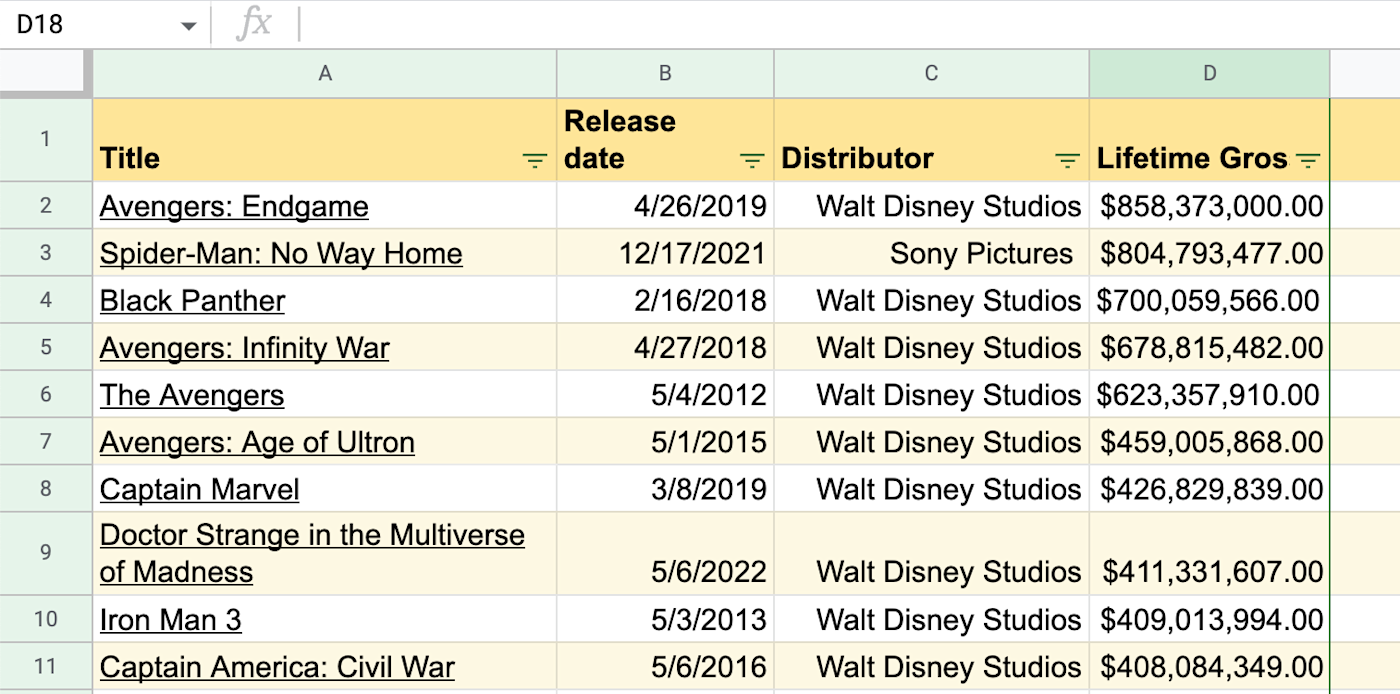
With your Google Doc open, select the Update button that automatically appears above your table.

Your table is updated and the Update button disappears, indicating this table reflects the most recent version of your spreadsheet data (or the data range indicated for your table).
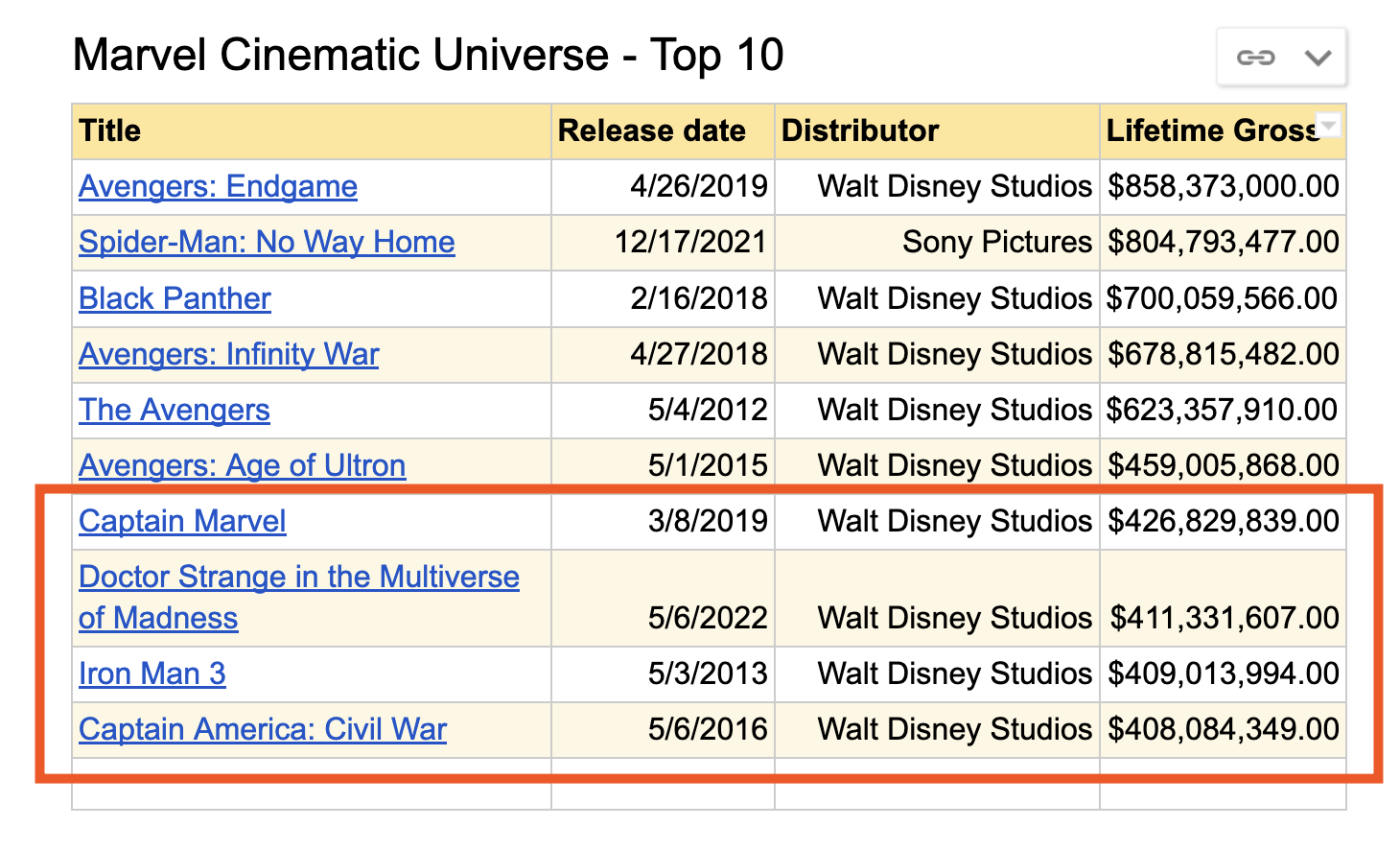
Every time you make updates to your spreadsheet, be sure to go back into your document and select Update.
Bonus: How to insert a chart from Google Sheets
If you need to add visual data to your Google Doc, you can also insert a chart directly from Google Sheets.
Make a chart from your data in your Google Sheets spreadsheet.
In your Google Doc, select Insert > Chart > From Sheets.
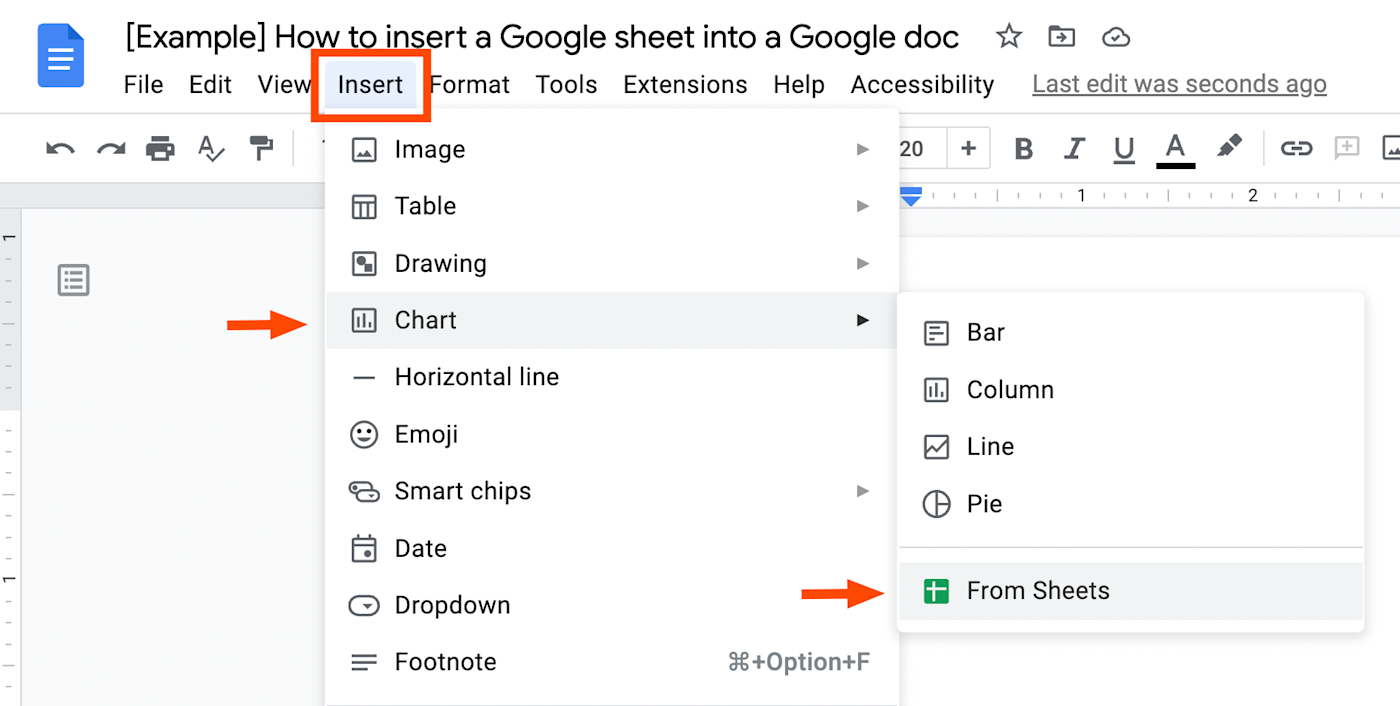
Select the Google Sheet containing your chart.
In the Import chart window that appears, select the chart you want to import, and then click Import.
This will embed an image of the chart into your Google Doc, which you can resize or move around as needed. If you need to tweak the chart, edit the original chart in Google Sheets. Then in Google Docs, select your chart, and click Update just as you would with your table.
You're all set!
More ways to connect Google Sheets to Google Docs
If you're tired of manually copying and pasting data from Google Sheets to Google Docs (or vice versa), you can use Zapier to send info between the two apps—automatically.
Here are a few Zap templates (what we call our pre-built workflows). Simply click on the Zap template below to get started. You'll need a Zapier account if you don't already have one.
Copy data from new Google Sheets rows to a Google Doc template
Bonus: Zapier supports thousands of apps, so you can connect Google Sheets to Google Docs—and then some. Start building your Zap now, and see what you can create.
Zapier is the leader in workflow automation—integrating with 6,000+ apps from partners like Google, Salesforce, and Microsoft. Use interfaces, data tables, and logic to build secure, automated systems for your business-critical workflows across your organization's technology stack. Learn more.
Related reading
This article was originally published by Matthew Guay in May 2019. The most recent update was in November 2022.






